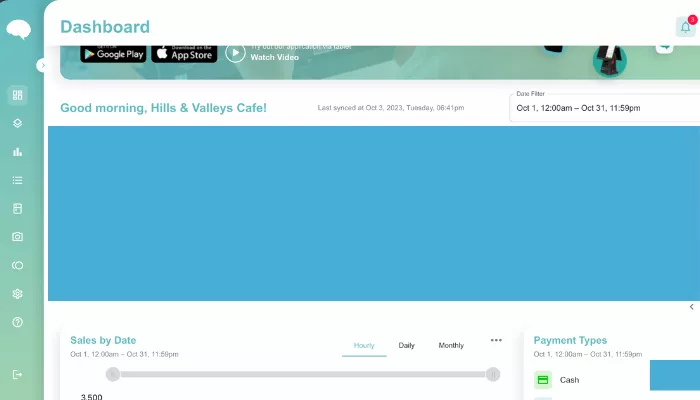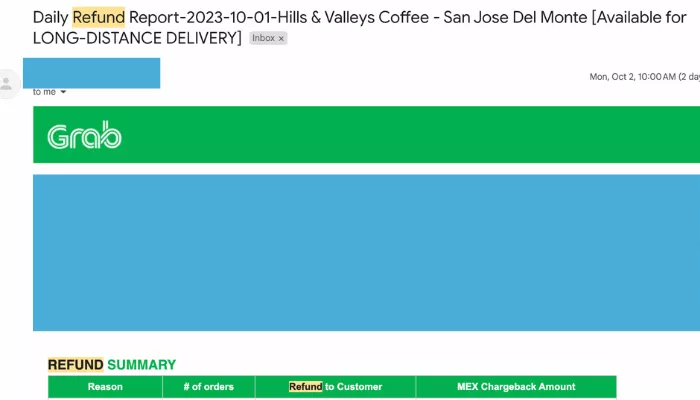Knowing your numbers is one key to growing your cafe business. Whether you’re an aspiring coffee entrepreneur or an established one, you should know the expected daily sales of your coffee shop in the Philippines.
Contents
ToggleExpected Daily Sales of Coffee Shop in the Philippines
Daily sales are among the first numbers to track when managing your coffee shop. By knowing how much cash and non-cash transactions go into your store from any purchase transaction, you’ll get to know if the cafe business is thriving or not.
Daily sales knowledge allows you to be more flexible and adaptive to every change happening in your local market.
For instance, if you know that your weekends must have an average daily sales of Php 15,000 to Php 25,000, and you find out four consecutive weekends to be lower than your expected daily sales, you could now make adjustments either with the quality of coffee you brew (to get returning customers), or promote even better to acquire new coffee lovers.
You can’t simply ignore knowing your expected daily sales, as this can help guide your rational decision in running and sustaining your cafe.
9 Easy Steps to Compute for Daily Sales of Coffee Shop
Now, let’s proceed to how you can compute the daily sales of coffee shops.
1. Record Every Sale
You first need to have a recording of every transaction in your coffee store.
The most convenient and effective way is to have a point of sale (POS) system so your baristas can easily input transactions on a tablet or any compatible device.
Tip: We use Utak POS in our coffee shop in Bulacan. It is an affordable POS in the Philippines (we don’t get commissions for recommending them).

There are also alternatives to POS, such as a cash register or manual recording system to track every sale made during the day.
See what fits your cafe, but I highly recommend investing in a POS to efficiently track numbers and monitor daily sales when you’re not around the cafe.
2. Categorize Sales (optional but helpful)
This step is optional, and you may skip this. But if you want to be more detailed about the sales numbers, you can break down sales into categories such as beverages, pastries, and merchandise.
This way, you can determine which products are popular (best-selling for the month) and profitable.
3. Tally Up Total Sales
To get the total sales, you sum up the total amount from all sales transactions. This includes all transactions from every product you sell within the day. This will give you the gross sales for the day.
4. Deduct Returns/Refunds
Check if there were any returns or refunds during the day. If you have delivery apps like FoodPanda and GrabFood, you can check your emails for any refunds within the day.

Deduct these amounts from the gross sales to get the net sales.
5. Factor in Discounts and Promotions
If you offer discounts or promotions, account for these reductions in your daily sales.
See the exact amount of each discount and promotion. This would give you the right amount of daily net sales.
6. Include Taxes
Cross-check that taxes are included in your sales amount among your POS and cash registers.
For the most part, taxes are shown separately in receipts, so adding them can quickly get the total sales.
7. Review Cash and Non-Cash Transactions
Review the total for each type if you accept multiple payment methods (e.g., cash, bank accounts like BPI, credit card, Gcash). This ensures your cash drawer matches your recorded cash sales and all electronic transactions have been processed correctly.
8. Double check
It is easy to lose track of the accurate amount. So, it is always an excellent practice to double-check your calculations. If you’re using a POS system, it could give you a daily sales report that looks like this:
You can cross-reference the total amount from POS with manual counts.
9. Document and Store
Ensure you document everything in your cafe business, including your daily sales. You can use spreadsheets, your POS system output reports, or as simple as a physical ledger.
All these documents you can use for accounting and tax purposes, as well as in tracking business performance.
How to Increase Daily Sales Of Your Coffee Shop?
Now that you know how to compute and track your daily sales, applying some of the best practices to increase daily sales is also essential.
Of course, tracking your numbers is good, but more importantly, you should sustain and grow your cafe business even more.
So, here are five ways to increase daily sales of your coffee shop:
1. Find a location with high foot traffic.
This is primarily applicable for starting cafe owners as they have the freedom to choose a store with good traffic of customers.
An established coffee entrepreneur who wants to expand their coffee shop in other locations (either through coffee franchising or a company-owned system) must be looking for a place with high foot traffic.
2. Build your brand.
In Asian countries, particularly in the Philippines, you’ll find coffee shops opening streets in between.
You need to build your brand to differentiate yourself from other local cafes. Ask yourself, “What makes your cafe uniquely different?”.
By focusing on branding with all your marketing efforts, you gain buzz around your local cafe, acquiring new customers and enticing loyal customers to make additional purchases.
Learning and applying fundamentals and tips on promoting your coffee shop is best.
3. Do competitor analysis.
One of the best ways to increase daily sales is to analyze what your competitors are doing.
This is not to mimic every detail of their business activity but to see their strengths and weaknesses, all while spotting opportunities you can take advantage of.
For instance, one audience group we managed to build stronger and deeper relationships with at Hills & Valleys Cafe – teachers. They usually conduct their meetings inside our cafe, allowing us to get recurring bulk orders every week. It also gives you free word-of-mouth marketing within the campus community.
Here are a few insights you can get from doing competitor analysis:
- Gaining traction on a specific platform or marketing channel your competitors aren’t investing in.
- Targeting a group audience (example above), other cafes aren’t strengthening relationships with.
- Promotional activities that have worked for them that you can innovate better to suit your target audience.
Competitor analysis is critical in enhancing your cafe’s branding and ability to capture a larger market share for your business.
4. Maximize the seasonality of products.
One significant insight in managing your coffee shop is understanding the seasonality of your products. You’ve got a primary menu, but there are seasonal beverages that are best to sell during one season.
For instance, you have a Peppermint beverage, suitable for the Christmas season, and another, a Refresher drink, best for the summer season.
You can maximize these seasonal products by creating promotional campaigns like BOGO to entice early sales for the day.
5. Adjust the pricing on offers.
A coffee shop’s day-to-day operations may seem routine, but at times, you don’t take the time to pause, reflect, and evaluate what’s happening in your store.
Adjusting the offers’ pricing is a good tip to increase expected daily sales. Remember that you should do it cautiously, as your customers might find that you’re taking advantage of them, which could negatively impact sales.
The best thing is to find the right timing when increasing prices for some of your products. For example, when you see inflation happening in some of the ingredients of your products, it is a good, reasonable way to adjust your pricing.
Announce the price adjustment. It is imperative to do it so your customers would know beforehand – a sign of respect for them as your loyal customers.
Key Takeaways
Knowing your numbers is one of a cafe entrepreneur’s incredible, essential abilities. By having a good look at your expected daily sales, you can think of any improvement to do for your cafe operations and sustain to expect even more growth.
Venchito Tampon
Venchito Tampon is the Founder and Chief Executive Officer of Hills and Valleys Cafe, known for its affordable yet high-quality coffee beverages. They currently have branches in San Jose Del Monte, Bulacan, Lower Bicutan Taguig and Davao City.

